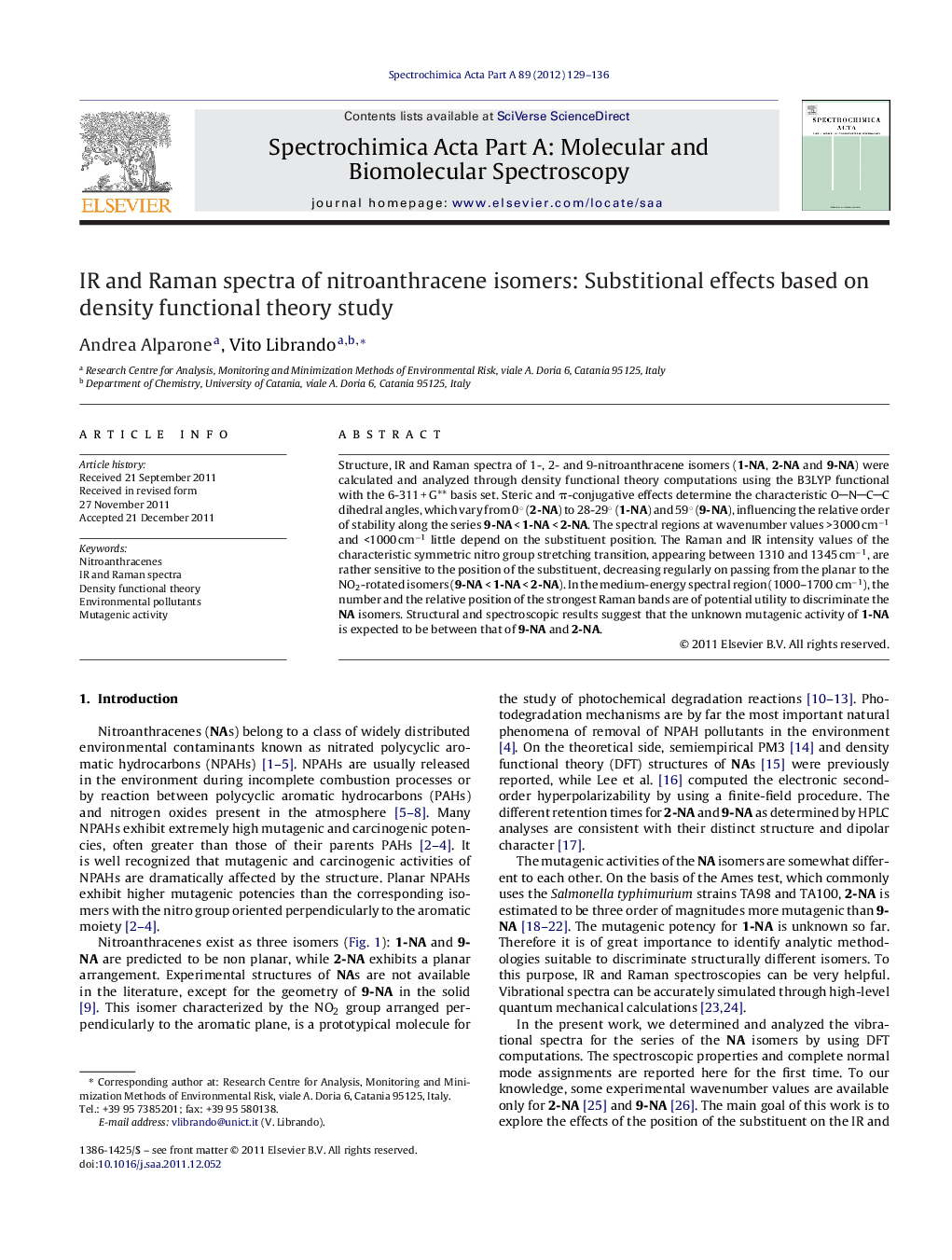| Article ID | Journal | Published Year | Pages | File Type |
|---|---|---|---|---|
| 1234659 | Spectrochimica Acta Part A: Molecular and Biomolecular Spectroscopy | 2012 | 8 Pages |
Structure, IR and Raman spectra of 1-, 2- and 9-nitroanthracene isomers (1-NA, 2-NA and 9-NA) were calculated and analyzed through density functional theory computations using the B3LYP functional with the 6-311 + G** basis set. Steric and π-conjugative effects determine the characteristic ONCC dihedral angles, which vary from 0° (2-NA) to 28-29° (1-NA) and 59° (9-NA), influencing the relative order of stability along the series 9-NA < 1-NA < 2-NA. The spectral regions at wavenumber values >3000 cm−1 and <1000 cm−1 little depend on the substituent position. The Raman and IR intensity values of the characteristic symmetric nitro group stretching transition, appearing between 1310 and 1345 cm−1, are rather sensitive to the position of the substituent, decreasing regularly on passing from the planar to the NO2-rotated isomers (9-NA < 1-NA < 2-NA). In the medium-energy spectral region (1000–1700 cm−1), the number and the relative position of the strongest Raman bands are of potential utility to discriminate the NA isomers. Structural and spectroscopic results suggest that the unknown mutagenic activity of 1-NA is expected to be between that of 9-NA and 2-NA.
Graphical abstractFigure optionsDownload full-size imageDownload as PowerPoint slideHighlights► We computed IR and Raman spectra of 1-, 2- and 9-nitroanthracenes (1-NA, 2-NA, 9-NA). ► We used the DFT-B3LYP/6-31G* and DFT-B3LYP/6-311 + G** levels of calculation. ► We identify vibrational markers useful to distinguish the nitroanthracene isomers. ► The mutagenic activity for 1-NA is expected to be between that of 9-NA and 2-NA.
